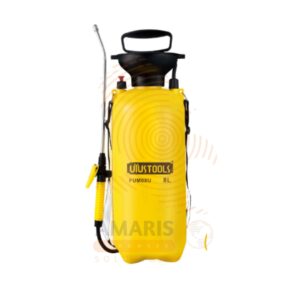AGRICULTURAL AND FARMING
Fork lift
Whatsapp Order
A fork lift, also known as a lift truck or fork truck, is a powered industrial vehicle primarily used to lift, move, and stack materials within warehouses, distribution centers, and manufacturing facilities. It typically features a pair of forks attached to the front that can be raised and lowered for loading and unloading pallets and other heavy items. Forklifts come in various sizes and configurations to accommodate different load capacities and operating environments. They play a crucial role in material handling and logistics operations, enhancing efficiency and productivity in various industries.
Compare
Fork Lift Uses
- Material Handling: Forklifts are primarily used for lifting, moving, and stacking materials, such as pallets, crates, drums, and boxes, within warehouses, distribution centers, and manufacturing facilities.
- Loading and Unloading: They are essential for loading and unloading trucks, trailers, and shipping containers, enabling efficient transportation of goods to and from storage areas and delivery vehicles.
- Inventory Management: Forklifts play a crucial role in inventory management by facilitating the movement of goods to designated storage locations, ensuring accurate tracking and efficient utilization of warehouse space.
- Order Picking: Forklifts are used for retrieving items from storage racks or shelves to fulfill customer orders, a process known as order picking. This helps expedite order fulfillment and improve overall warehouse efficiency.
- Construction and Building Sites: Forklifts are utilized on construction sites and building projects for lifting and moving heavy materials, equipment, and supplies, such as lumber, steel beams, bricks, and concrete blocks.
- Manufacturing Operations: Forklifts assist in the transportation of raw materials, components, and finished products within manufacturing facilities, facilitating seamless production processes and just-in-time inventory management.
- Retail and Wholesale Operations: Forklifts are employed in retail and wholesale environments for handling bulk merchandise, stocking shelves, and replenishing inventory on sales floors or in storage areas.
- Ports and Freight Terminals: Forklifts are essential equipment at ports and freight terminals for handling cargo containers, loading and unloading ships, trains, and trucks, and transferring goods between different modes of transportation.
- Waste Management and Recycling: Forklifts are used in waste management facilities and recycling centers for sorting, transporting, and stacking recyclable materials and waste products.
- Specialized Applications: Forklifts are adapted for specialized applications, such as cold storage facilities (cold room forklifts), hazardous material handling (explosion-proof forklifts), and narrow aisle operations (reach trucks or turret trucks).
Safety precautions
- Operator Training: Ensure that all forklift operators are properly trained, certified, and authorized to operate the equipment. Training should cover safe operation procedures, hazard recognition, and emergency protocols.
- Pre-Operational Inspection: Conduct a thorough inspection of the forklift before each use to check for any defects, malfunctions, or damage. This includes inspecting brakes, steering, tires, lights, horn, and hydraulic systems.
- Load Capacity: Always adhere to the manufacturer’s load capacity ratings and never exceed the maximum load capacity of the forklift. Distribute loads evenly and securely on the forks to maintain stability.
- Stability: Be aware of the forklift’s stability and center of gravity. Avoid making sharp turns, sudden stops, or abrupt movements that could cause the forklift to tip over. Keep the load low to the ground and tilted back when traveling.
- Traffic Control: Observe designated traffic lanes and speed limits within the workplace. Use horns, lights, and warning signals to alert pedestrians and other vehicles of your presence. Yield the right of way to pedestrians and other equipment when necessary.
- Visibility: Maintain clear visibility by keeping the load at a safe height and avoiding obstructing your view with loads or attachments. Use mirrors, cameras, and spotter assistance when necessary, especially when backing up or operating in confined spaces.
- Operating Environment: Be mindful of the operating environment and hazards such as uneven surfaces, ramps, slopes, low overhead clearance, and confined spaces. Adjust your driving behavior accordingly and use caution when navigating through congested areas.
- Seatbelt Use: Always wear a seatbelt while operating a forklift to prevent ejection in the event of a collision or tip-over.
- Dismounting Safely: Use three points of contact (two hands and one foot or two feet and one hand) when entering or exiting the forklift. Never jump off or from the forklift.
- Emergency Procedures: Familiarize yourself with emergency procedures, including how to safely shut down the forklift in case of an emergency, how to respond to spills or accidents, and how to evacuate the area if necessary.






There are no reviews yet.